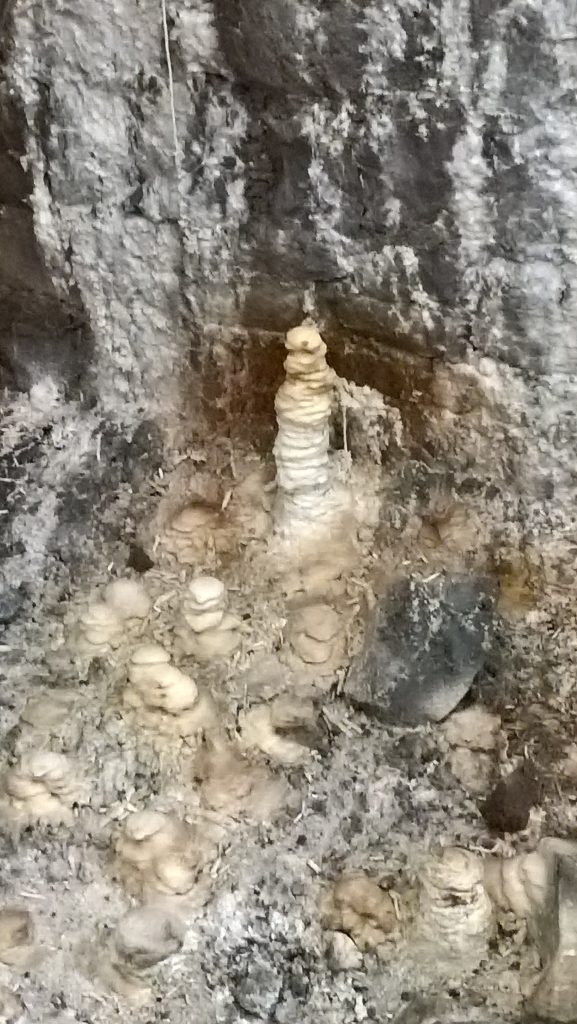Anyone familiar with the West Country will be aware of the iconic suspension bridge stretching high above the Avon Gorge on the south side of Bristol, but few people, even locals, will be aware that the two monumental brick abutments beneath the bridge on either side are hollow, and even fewer will know that you can now take a special tour into the heart of one of the most famous bridges in the country.

The idea of building a bridge across the River Avon first came up in 1753. The intention was to link the affluent area of Clifton with Leigh Woods on the other side of the river. Various ideas were mooted, including a stone bridge and an iron bridge, and finally, in 1829, enough money had been raised for a design competition to be held. It proved impossible to decide on a winner and a second competition was held. This was won by the young Isambard Kingdom Brunel who was appointed as Project Engineer. The Bristol Riots in 1831 brought Brunel’s plans to an abrupt halt. A revised version was finally brought to fruition after his death and the work was completed in 1864.
The two enormous bridge towers are not identical in design, having been built by two different companies, but few people know that, as having both in view at once isn’t easy. It was originally intended to face the towers in Egyptian style and even have two stone lions on top, but that idea fell through as travellers would end up having to face a lion’s bum when driving across the bridge, although history doesn’t relate why they didn’t just have the lions sitting down! The towers remain faced in rough stone, probably for reasons of cost. Those were just some of the fascinating facts we learned during a two hour, behind the scenes tour, organised by caver Dick Willis, for a group of University of Bristol alumni.
As no construction drawings of the bridge survived, it was always believed that the bridge abutments were solid, but during engineering work in 2002, it was discovered that the massive structures are in fact hollow, with eight vast, cathedral-like vaults inside the pillars.
As soon as I saw TV footage of the interior of the abutments, I was itching to get down there, but health and safety wheels grind exceedingly slowly. When opportunity finally knocked, a bunch of cavers and assorted other Bristol folks were down there like rats down a drain, taking part in the Clifton Suspension Bridge Hard Hat Tour.
 We met at the Toll Booth on the Bristol side where our guide, an enormously enthusiastic and knowledgeable gentleman, took us through the bridge’s fascinating history and illustrated, with the aid of a bike chain how the suspension bridge works. It soon became clear that we were all woefully ignorant on the subject of such a famous part of Bristol’s history!
We met at the Toll Booth on the Bristol side where our guide, an enormously enthusiastic and knowledgeable gentleman, took us through the bridge’s fascinating history and illustrated, with the aid of a bike chain how the suspension bridge works. It soon became clear that we were all woefully ignorant on the subject of such a famous part of Bristol’s history!
As the tour was taking place at night (the last trip of the season until they reopen in April next year), we were able to enjoy the sight of the bridge lit up at night and the lights of the traffic far below us on the Portway. We were then shown around the Visitor Centre on the south side of the bridge.There we signed the obligatory we-won’t-sue-you forms and received reflective jackets and hard hats. Our guide was most unfazed by the fact that two of us had taken our own caving helmets and lights, and in fact the additional lights proved useful when it came to negotiating the metal ladder down to the entrance in the dark.
At the bottom, we left behind the cold of a Bristol night in early November for the relative warmth of the huge vaults inside the bridge. The cavers in the group promptly wanted to scurry off up ladders, around traverses and through small holes, but we managed – with an effort – to restrain ourselves! The vaults are vast and profusely decorated with stalagmites and stalactites of the type and quality you’d normally have to work hard to see underground.

Everywhere we looked, a forest of long straws was hanging down from the roof of the brick vaults, glittering white in the electric lights that have been installed to enable visitors to follow in the footsteps of the workmen who built these amazing structures. But in their day, the brickwork would have been plain and unadorned by stal. It’s hard to imagine that all these formations have grown up – and down – in the 176 years since work on the bridge was completed.
The tour lasted in the region of two hours and we had plenty of time to look around underground. Cavers and non-cavers were equally blown away by the experience and I would recommend it to anyone!
There were 12 people in our group. The Trust who run the bridge hope to keep this very much a special experience, so do check out their website and keep an eye out for when next year’s tour dates go live. Book up quickly, as this promises to be a very special addition to the fascinating realm of secret underground Bristol.
No caving experience is needed, but you do need to be able to negotiate the metal ladder that leads down to the secure metal entrance. You can find details of how to book here.
Correspondent and all photos: Linda Wilson.
